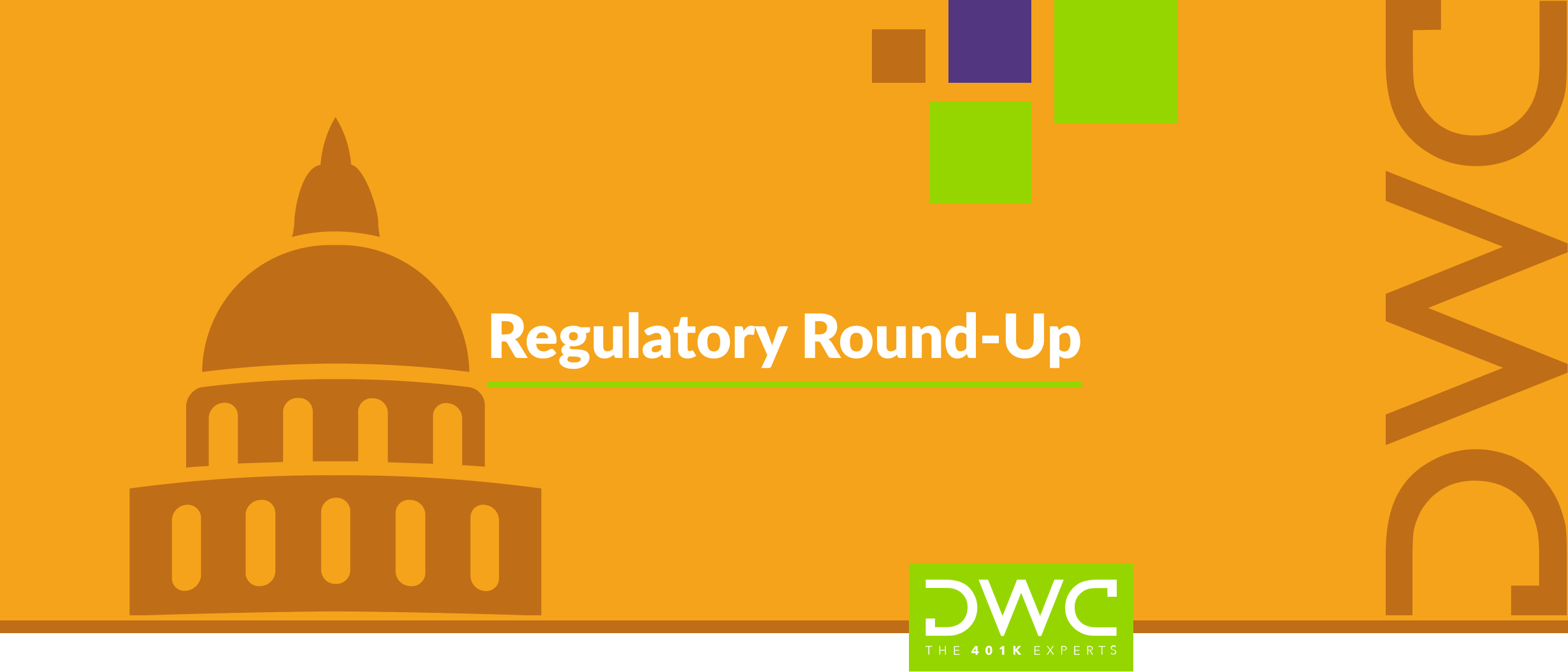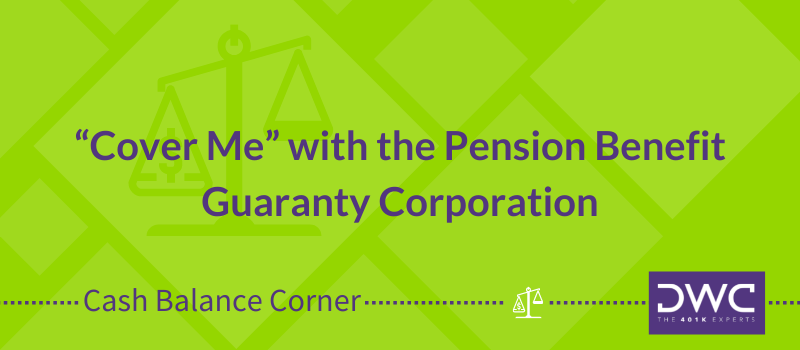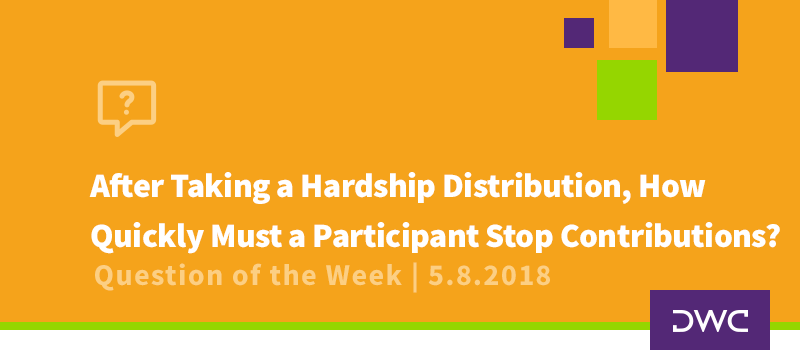Safe Harbor 401(k) Resources
If you are a current plan sponsor or are considering setting up a 401(k) plan, you may have heard the term ‘safe harbor’ mentioned. You may have been told that a safe harbor feature would benefit your participants, allow you to contribute more, or provide a free pass on some of the annual compliance requirements. All of those things are true; however, all of the rules and regulations can make it less than clear as to what this provision is really doing for you in practice.
One common source of confusion is that the term ‘safe harbor’ is used in many different contexts within the world of retirement plans. Employee deferral deposits, hardship distributions, and nondiscrimination testing all have safe harbor standards; the difference between these uses is discussed in more detail here. We've dedicated this page to answering all of your safe harbor questions in one place.
Benefits of a Safe Harbor Feature
The primary benefit of the safe harbor 401(k) feature is that it provides for the automatic passage of certain annual nondiscrimination tests that can otherwise limit the contributions made by certain company owners and other highly compensated employees (generally, those earning more than $125,000 per year).
There are three main tests that come into play:
- ADP Test The actual deferral percentage (ADP) test compares the average deferral rates of highly compensated employees (HCEs) to those of non-HCEs. Generally speaking, if the spread is more than two percentage points, the test fails and must be corrected by either returning contributions to the HCEs or the company contributing more on behalf of the non-HCEs.
- ACP Test The actual contribution percentage (ACP) test is similar to the ADP test, but applies to employer matching contributions.
- Top Heavy Determination The top-heavy test compares the total account balances of key employees (generally, the company owners and officers) to those of non-key employees. If the key employee balances comprise more than 60% of total plan assets, the plan is considered top-heavy, which can trigger additional company-provided contributions.
A safe harbor 401(k) feature exempts the plan from the ADP test. As long as the formula used to determine company matching contribution remains within certain parameters, the ACP is also deemed to automatically pass. We will discuss this more below.
As long as the company does not make any contributions to the plan other than those that qualify for the ADP and ACP safe harbors, the plan is also deemed to automatically satisfy all of the top-heavy requirements. The most common type of contribution that would negate this is a profit sharing (a/k/a nonelective) contribution. However, since the primary consequence of a plan being top heavy is that the company must ensure all non-key participants receive employer contributions totaling at least 3% of their compensation, a profit sharing contribution of at least 3% will already meet that requirement, making it a non-issue.
The fact that a safe harbor plan will automatically pass these tests means that owners, officers and other HCEs can maximize their contributions each year without concern about possible refunds or additional contribution liabilities for the company.
Requirements of a Safe Harbor Feature
If you are thinking there must be a catch, you are correct. In exchange for these benefits, safe harbor plans meet several additional requirements that do not apply to other 401(k) plans.
In non-safe harbor plans, employer contributions are discretionary; the employer decides what matching or nonelective contribution, if any, to make in a particular year. Safe harbor plans require certain mandatory contributions along with the option for the company to make additional discretionary contributions.

These mandatory contributions can take several different forms:
- Safe Harbor Match This option requires the company to make a match on behalf of those participants who defer. The minimum formula is 100% of the first 3% deferred by each participant plus 50% of the next 2% deferred. In other words, any participant who defers at least 5% of their pay receives a company match equal to 4% of pay.
- Safe Harbor Nonelective This option calls for a company contribution of at least 3% of pay for each employee who is eligible for the plan, regardless of whether or not they choose to defer.
Both of these types of contributions must be immediately vested, and neither can be contingent on any additional conditions such as working a minimum number of hours or being employed on the last day of the year.
Plans that include certain automatic enrollment features have some additional options. For starters, the automatic deferral rate must start at a minimum of 3% of pay. It must then increase by one percentage point each year until it reaches at least 6% of pay. These automatic escalations can increase beyond that as long as they never go above 10% of pay.
These so-called Qualified Automatic Contribution Arrangements (or QACAs) have two different company contribution options. One is the same 3% nonelective contribution described above. However, the match option is slightly less expensive at 100% of the first 1% deferred plus 50% of the next 5% deferred. That yields a maximum match of 3.5% of pay for anyone who defers at least 6% of pay. The other option available in a QACA is that the safe harbor contributions can be subject to a vesting schedule of up to two years.
Many are tempted to see the safe harbor formula as a minimum contribution. After all, one might think, what could be the harm in giving employees more than promised? That is true to a point, but if a company wants to provide a more generous safe harbor contribution than in the formulas noted above, that decision must be made ahead of time and written into the plan document. A common example of this is that some companies prefer to use the easier-to-understand match formula of 100% of the first 4% deferred rather than either of the two-step formulas. That is certainly more generous, but to use that formula, it must be written into the plan so that participants can adjust their contribution levels accordingly. Any divergence from the safe harbor formula for the plan, whether more or less, is considered an error that must be corrected.
If the company wants to make additional contributions in a particular year, this must be done via the discretionary contribution features permitted by the plan, subject to any additional testing requirements that may apply. We should note that although safe harbor contributions must be immediately vested (or vested after two years in a QACA), any additional discretionary contributions can be subject to a vesting schedule of up to six years.
In addition to prescribing the annual employer contribution formula, a safe harbor feature carries additional administrative requirements for the plan:
- Annual safe harbor notices covering the terms of the plan’s safe harbor feature must be distributed to all eligible employees between 30 and 90 days before the start of each year.
- Employees must be given at least 30 days advance notice of changes to the plan that impact the features covered in the safe harbor notice.
- Changes affecting the safe harbor formula itself or that make any other plan provisions more restrictive can only take effect on the first day of a subsequent plan year.
While distributing the safe harbor notice each year may not represent a significant administrative burden, it is important to keep in mind that the notice requirement means that the safe harbor feature cannot be added, removed, or modified mid-year. It also means that companies should build in a timing buffer of at least 30 days when considering the timing of most other plan changes.
- Are We Required to Make Safe Harbor Contributions for HCEs?
- Can We Require Employees to be Employed at Year-End to Receive a Safe Harbor Contribution?
- Safe Harbor 401(k) Match vs. Nonelective: Two Words for the Same Thing or Two Different Options?
- What is the Deadline to Deposit Our Safe Harbor Matching Contribution?
Safe Harbor FAQs
As we provide answers to your most frequently asked questions in our 401(k) Q&A Question of the Week posts, we will include them here for a one-stop-shop for all SECURE Act resources. Don't see your question? Submit it here.
What Does Safe Harbor Mean, Exactly? The term "safe harbor" is thrown around quite a lot in different contexts. Find out what it actually means here.Match vs. Nonelective If your company makes a contribution to every eligible participant, regardless of whether they contribute themselves, is it really a match? We break down the difference between these two often-confused terms here. Contributions for HCEs Is there a way to structure your plan so that the company contribution for HCEs is optional while still maintaining safe harbor status? Find out here.Deposit Deadlines When are you required to deposit your safe harbor matching contribution each year? Here's what you need to know. Calculating Contributions How do you correctly determine which compensation to use to calculate your safe harbor contribution? There are a few considerations that often cause confusion. We've cleared them up here. Employment Requirements Can you require employees to be employed at year-end in order to receive a safe harbor contribution? What if terminated employees have already taken a distribution of their account? Get the details.Split Eligibility Is it possible to split eligibility to allow new hires to defer right away, but to postpone eligibility for safe harbor contributions for one year? We break it down here. Automatic Enrollment What plan designs options are available to combine the benefits of automatic enrollment with other features that will ensure you pass testing? Find out here. Corrections What happens if you thought you had a safe harbor plan but...you didn't. We take you through the correction steps in this Correction of the Quarter article. Contribution Suspension Can you suspend safe harbor contributions mid-plan year? Get the details on the options, requirements and deadlines for making contribution changes here. Adding Matching Contributions Is there a way to add additional company contributions without losing your safe harbor status? Find out here. Maintaining Flexibility Is there a way to include a safe harbor provision to our plan but still maintain flexibility in our contribution costs? Get the answer here. Have a Question? Can't find the answer you're lookingfor? Ask us! You may even see your question featured here and on the DWC 401(k) Q&A blog. Submit your question here.



















